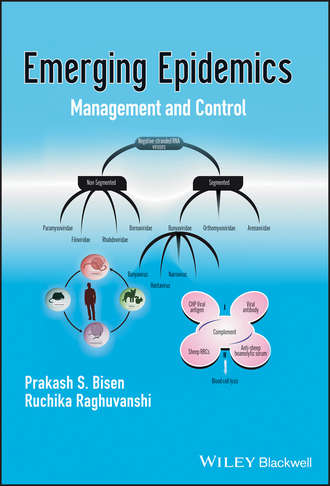
Полная версия
Emerging Epidemics. Management and Control
A global perspective on the management and prevention of emerging and re-emerging diseases Emerging infectious diseases are newly identified or otherwise previously unknown infections that cause public health challenges. Re-emerging infectious diseases are due to both the reappearance of and an increase in the number of infections from a disease that is known, but which had formerly caused so few infections that it was no longer considered a public health problem. The factors that cause the emergence or re-emergence of a disease are diverse. This book takes a look at the world's emerging and re-emerging diseases. It covers the diagnosis, therapy, prevention, and control of a variety of individual diseases, and examines the social and behavioral issues that could contribute to epidemics. Each chapter focuses on an individual disease and provides scientific background and social history as well as the current basics of infection, epidemiology, and control. Emerging Epidemics: Management and Control offers five topics of coverage: FUNDAMENTALS Epidemics fundamentals Disasters and epidemics Biosafety RE-EMERGING EPIDEMICS Tuberculosis Plague NEWLY EMERGING EPIDEMICS Leptospirosis Dengue Japanese Encephalitis Chikungunya Fever West Nile Virus Chandipura Virus Encephalitis Kyasanur Forest Disease Hantavirus Human, Avian, and Swine Influenza Severe Acute Respiratory Syndrome Nipah Virus Paragonimiasis Melioidosis POTENTIAL EPIDEMICS Biowarfare and bioterrorism Food contamination and food terrorism Antimicrobial resistance VECTOR CONTROL METHODS Mosquito control Other disease vectors and their control Offering an integrated, worldwide overview of the complexity of the epidemiology of infections, Emerging Epidemics will be a valuable resource for students, physicians, and scientists working in veterinary, medical, and the pharmaceutical sciences.

